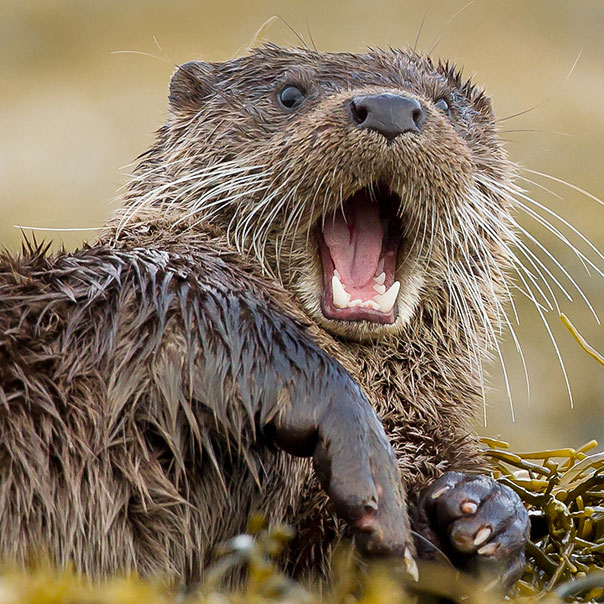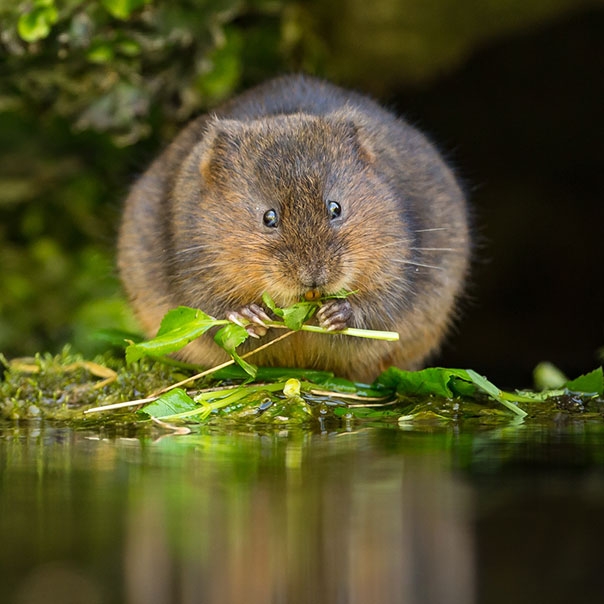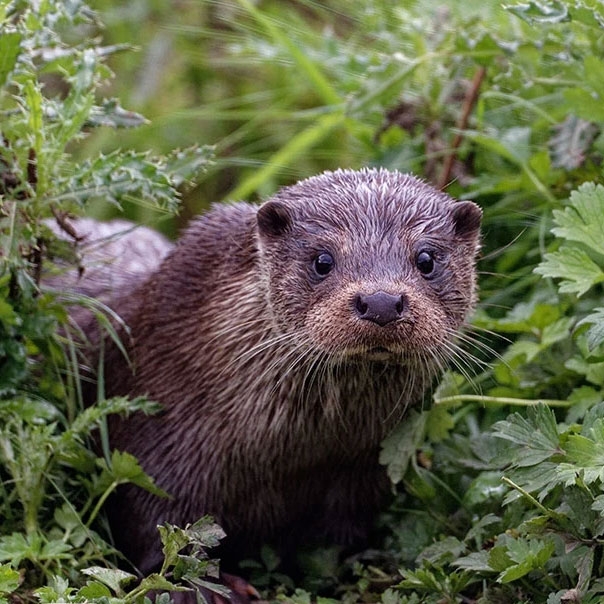Mammals found in UK wetlands
Mammals are a key part of wetland ecology. Some are cute, some are fierce, all playing important roles. Many are good indicators of wetland health as the environment must be in a healthy state to support them. Mammals are often the most familiar of wetland species to us but count yourself lucky if you get a glimpse; they’re much harder to see than other wetland wildlife such as birds or dragonflies.
Here’s the mammals that are most tied to wetlands, with water being essential to their day-to-day lives. Of course, all mammals rely on water, so don’t be surprised if you see a mammal in a wetland that doesn’t appear on our list below.
Identifying the mammals
Daubenton's bat (Myotis daubentonii)
This aerial hunter has adapted to catch aquatic insects by trawling across the surface with their feet, literally scooping up their meal.
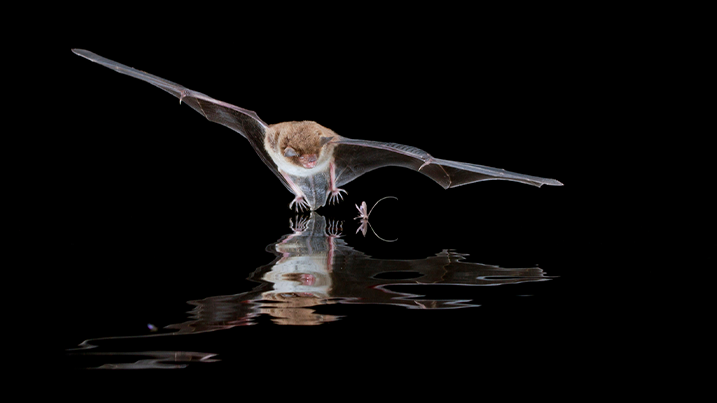
Eurasian beaver (Castor fiber)
Beavers were widespread in the UK until the 16th century when they were wiped out due to over—hunting for fur and castoreum (a substance that beavers use to mark their territory and humans used for perfumery and medicine) . They’re excellent swimmers, propelled by a broad, flat tail. They are rodents with a diet of vegetation and bark, using their ever-growing teeth to gnaw trees and build their lodge. These activities increase habitat for a range of other wildlife. Thanks to reintroduction projects, they can now be found in a range of water catchments in Scotland, England and Wales. Some are free-roaming but some are restricted to large enclosures. During the winter months, beavers stay active and rely on food stores that have been stashed in their lodge over the summer.
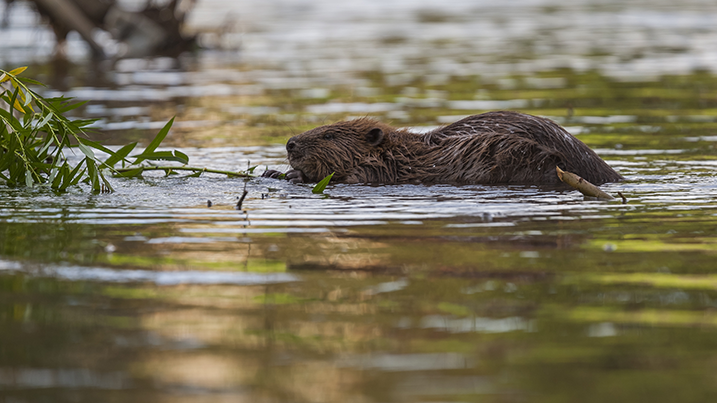
Eurasian otter (Lutra lutra)
As recently as the 1990s, otters were incredibly rare. Since the use of organo-chlorine pesticides has been stopped, every county in the UK is now home to otters and they can be seen throughout the year. However, they can be tough to see, being shy and mostly nocturnal. They eat a range of prey including fish, crustaceans, amphibians, small mammals and waterbirds. Look for small ears, long whiskers, a short nose and front-facing eyes.
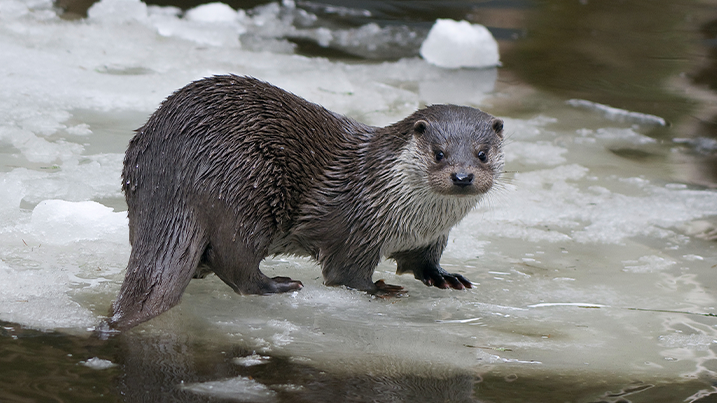
Water shrew (Neomys fodiens)
The UK’s largest shrew, they have black, velvety, insulating hair on the top half of their body with pale fur underneath. They mainly eat invertebrates but can take small amphibians and fish. Unusually, they have venomous saliva which stuns their prey. Active in all months of the year.
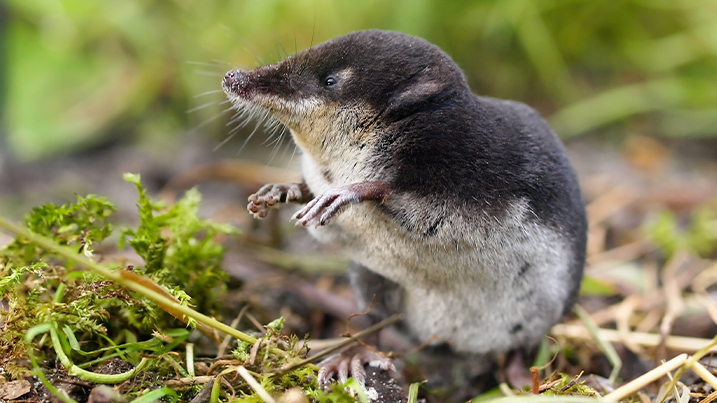
Water vole (Arvicola amphibious)
The largest UK vole, they’re slightly smaller than a brown rat and were formerly common throughout mainland Britain, suffering the most dramatic decline of any mammal in the UK over the last century. This has been caused by habitat loss, pollution and predation from the invasive American mink. At their remaining strongholds, they can be seen throughout the year but you’re most likely to hear a distinctive ‘plop’ when they enter the water or find nibbled vegetation.
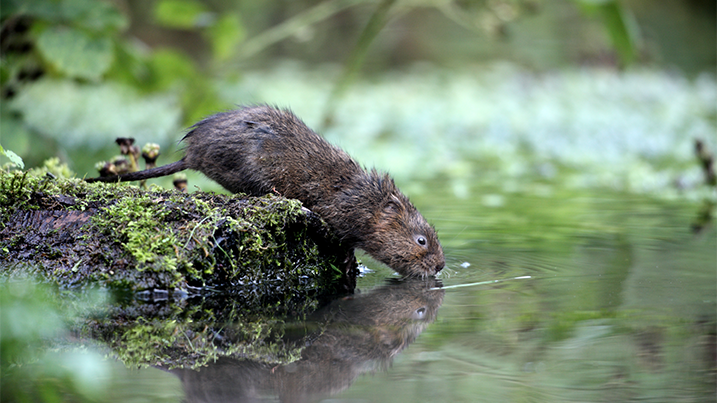
Introduced species
American mink (Neovison vison)
Mink established themselves after escaping from fur farms in the mid-20th century and now are widespread across the UK. Like a dark-coloured weasel with a white throat and chin, they could be confused with an otter, but they are smaller and darker. Their predatory behaviour has had a huge impact on our water vole populations, as unlike the vole’s native predators, mink are both good swimmers and able to enter the vole’s burrows.
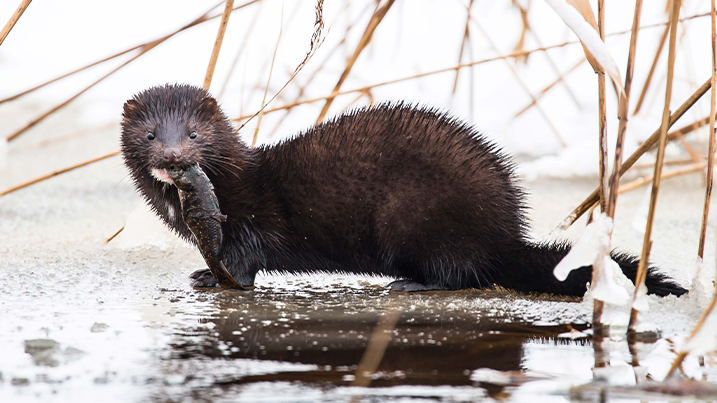
Chinese water deer (Hydropotes inermis)
Easily identified by their fluffy, gingery-brown coats and long canine tusks in the males, these deer have a definite ‘cute’ look about them. Introduced from China in the 19th century, they’re good swimmers and are mostly seen in central and eastern England, throughout the year. They haven’t spread too far from their original release area and have not been recorded to have a detrimental impact on native wildlife.
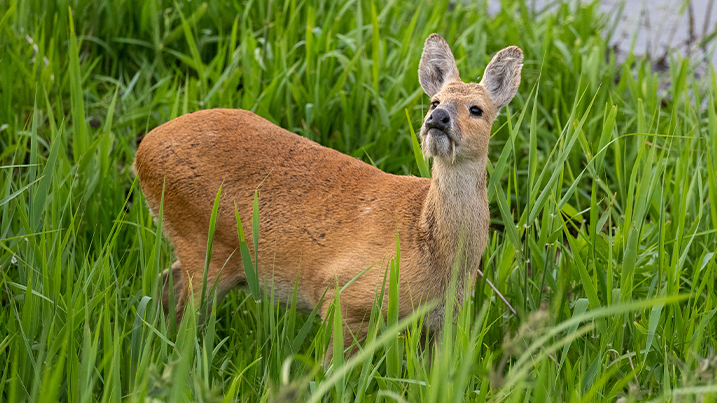
How WWT are helping
Mammals are often a good indicator of the health of wetlands; otter declines in the UK in the late 20th century highlighted the effect of pesticides. Water vole declines are still highlighting the disproportionate impact of introduced American mink. By monitoring mammals, we can spot environmental problems and come up with solutions.
Mammals are often victims of habitat loss and degradation, so protecting, restoring and creating clean and healthy wetlands is key for mammal populations, with varied habitats and a variety of food sources needed. For hundreds of years, UK wetlands have been drained for agriculture and development, resulting in a loss of habitat for many of our species. We're working to restore wetlands on a national scale and you can help with our campaign for 100,000 hectares of new wetlands.
Wetland mammals are notoriously elusive but you might be lucky enough to catch a glimpse of an otter or water vole at a WWT wetland site.
Find your nearest WWT site